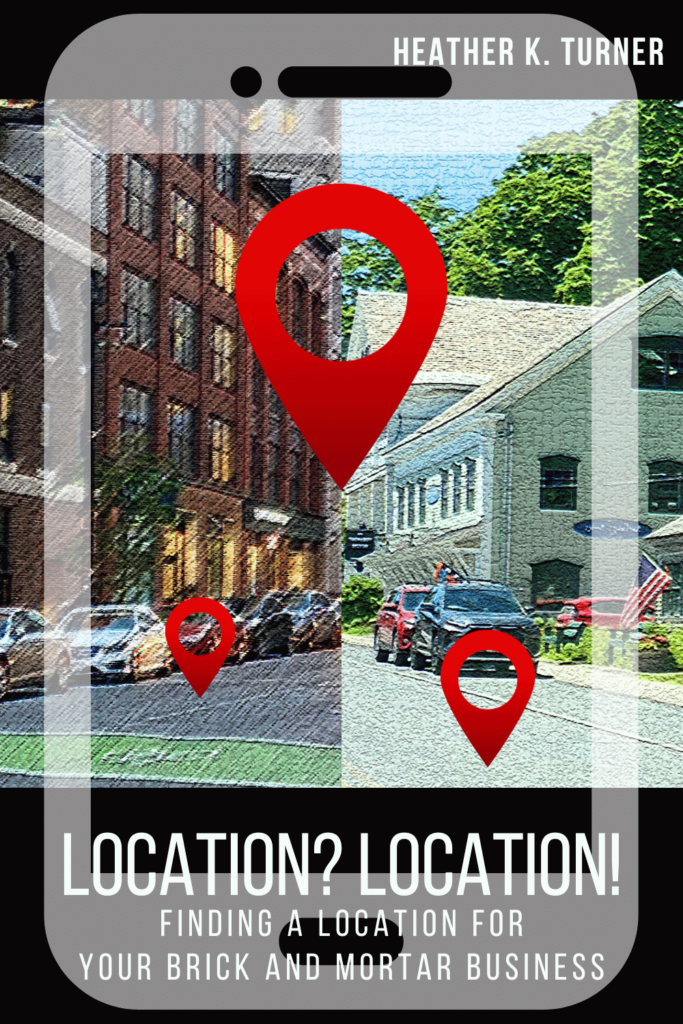Finding a location tips: Hair Salons

In Chapter 13 of my location assessment book I talk about foot traffic. I’d like to dive in a little bit more on foot traffic and using hair salons is a perfect example of this. If you are in a more rural area, your traffic is primarily going to be dependent on people making appointments and driving anywhere from a short distance to a long distance away rather than foot traffic. In this case how (website, social media, print ads, online ads, networking, etc.) and where you advertise (where is the competition advertising?) as well as making sure your pricing is in line with area competitors is going to be key.
If you are in a more urban area and even more densely populated one like New York City you’re going to have different types of foot traffic. I am going to include some types of public transportation as foot traffic because unless you have a subway or bus stop right in front of your salon, there is still typically some walking. There are walkers that are passersby, typically a very small percentage that are going to be impulse walk-ins, although a barber shop may have a higher percentage, and clients who walk from their homes or businesses.
For example, you might have someone that lives within two to five blocks of your salon walk to it, or they might take a bus, subway or elevated train depending on where you are. Your clients with a more disposable income might be coming from a similar distance away but they may prefer to take a cab or have a driver drive them.
Your clientele might be primarily men, or primarily women or could be a mix, or families. Are they clients that are looking for a quick serve in and out for a 20 minute wash, cut and blow dry, or is it a two hour experience? Is your clientele single professional people with more money to spend on an appointment? Are you close to residential neighborhoods and if you are, what types of neighborhoods are they? Are you more in the heart of a financial, business or shopping district? And again, who are the types of people that might come and either work in the area or shop in the area? How much time do they have on their hands and importantly when? Lunchtime? Prior to work? After work? It might be a combination of some or all of those, but it’s important to think about how they will come to you if you’re in a city or more urban area that may not have a lot of parking or limited parking.
Doing this assessment preopening a location can help dictate what hours you are going to be open and what you offer. If you are catering specifically to families with kids, with kids in addition to parents being clientele, evenings and weekends will typically be busier except during school breaks and the summer months, so plan accordingly.
What services do you think they’re willing to pay for, as well as what are the competitors offering, plus what are the competitors charging? And I say “think” for a reason. Do your research first, ask questions of residents and do the competition stalking because if you just assume that moving into a salon that offers services to a demographic that doesn’t want, can’t pay for, or does not have time to take advantage of, turns the word assume into any of your choice of applicable acronyms.
- Avoiding Serious Study Undermines Market Entry
- A Strategy Sorely Underestimated Means Exit
- Analysis Shortcuts Sink Unprepared Market Entrants
- A Stupid Strategy Usually Means Exit
- A Startup Stumbles Unless Market Examined
- Avoiding Smart Steps Undermines Money & Effort
- A Strategy Sans Understanding Means Exiting
- Avoiding Study Secures Unnecessary Mistakes & Errors
Three additional things to think about when opening a salon, whether you are building from scratch, revamping an existing space (occupied formerly by another type of business) or taking over an open (or recently closed but existing salon).
Just because an existing salon has been operating in the space doesn’t mean you don’t still need to evaluate these things. If a space offers four salon chairs and you plan to add two additional chairs into the space, you will need to find out whether you will have the plumbing capacity to handle additional high-water usage and have proper drainage. A new or renovated space needs to have sufficient plumbing to handle multiple shampoo stations. Most standard retail spaces often lack the proper pipe capacity, hot water heating capability and may have potential drainage issues.
Another consideration is ensuring the space has proper ventilation for the strong chemicals and styling sprays used commonly by salons. Having sufficient HVAC capacity is critical to prevent fumes from building up.
The third consideration is that the electrical system must be able to support multiple high-wattage appliances running simultaneously. I spoke with a business owner last year who renovated an existing space that was formerly a retail store (not a existing salon), and had to spend over 25K to upgrade the current electrical system between upgrading the existing electrical panel, new wiring and dedicated circuits and labor costs. So it’s worth evaluating (and getting several cost estimates) if you are renovating or expanding a place you are renting or planning on purchasing beforehand.
Action items:
Who is the competition?
What is their pricing?
What do they offer?
Where and how do they advertise? (Offline and Online)
Can the area of region support another salon/hair stylist? Or is there already market saturation?
Who (specifically is your target market(s)?
What services are they looking for? (don’t assume: ask, research, poll, do surveys)
Does the location have adequate water and drainage?
Is there adequate HVAC needs for the space?
Is there adequate electrical capability for the space?
For additional touchpoints and topics on evaluating a space for your salon, please check out Finding a Location for Your Brick and Mortar Business

 Times are tough right now for many businesses. When they say, “May you live in interesting times”. It’s unfortunately not a blessing of future wellbeing. I know many businesses, no matter who you voted for, are feeling the pinch of not being able to find staff, costs rising on things outside of anyone’s control, like a bad coffee bean harvest, for example, and other challenges.
Times are tough right now for many businesses. When they say, “May you live in interesting times”. It’s unfortunately not a blessing of future wellbeing. I know many businesses, no matter who you voted for, are feeling the pinch of not being able to find staff, costs rising on things outside of anyone’s control, like a bad coffee bean harvest, for example, and other challenges.
